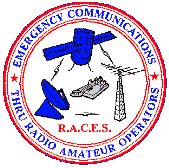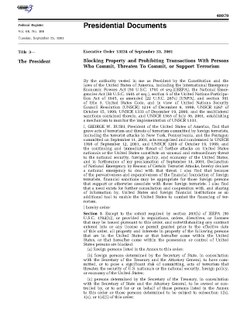Related Research Articles

The Emergency Broadcast System (EBS), sometimes called the Emergency Broadcasting System or the Emergency Action Notification System (EANS), was an emergency warning system used in the United States. It replaced the previous CONELRAD system and was used from 1963 to 1997, at which point it was replaced by the Emergency Alert System.

An emergency position-indicating radio beacon (EPIRB) is a type of emergency locator beacon, a portable, battery-powered radio transmitter used in emergencies to locate airplanes, vessels, and persons in distress and in need of immediate rescue. In the event of an emergency, such as a ship sinking or an airplane crash, the transmitter is activated and begins transmitting a continuous radio signal, which is used by search-and-rescue teams to quickly locate the emergency and render aid. The signal is detected by satellites operated by an international consortium of rescue services, COSPAS-SARSAT, which can detect emergency beacons anywhere on Earth transmitting on the COSPAS distress frequency of 406 MHz. The consortium calculates the position of the beacon and quickly passes the information to the appropriate local first responder organization, which performs the search and rescue. The basic purpose of this system is to help rescuers find survivors within the so-called "golden day" during which the majority of survivors can usually be saved. The feature distinguishing a modern EPIRB, often called GPIRB, from other types of emergency beacon is that it contains a GPS receiver and broadcasts its position, usually accurate within 100 m (330 ft), to facilitate location. Previous emergency beacons without a GPS can only be localized to within 2 km (1.2 mi) by the COSPAS satellites.

The Securities Act of 1933, also known as the 1933 Act, the Securities Act, the Truth in Securities Act, the Federal Securities Act, and the '33 Act, was enacted by the United States Congress on May 27, 1933, during the Great Depression and after the stock market crash of 1929. It is an integral part of United States securities regulation. It is legislated pursuant to the Interstate Commerce Clause of the Constitution.

An executive order is a means of issuing federal directives in the United States, used by the President of the United States, that manages operations of the federal government. The legal or constitutional basis for executive orders has multiple sources. Article Two of the United States Constitution gives the president broad executive and enforcement authority to use his or her discretion to determine how to enforce the law or to otherwise manage the resources and staff of the executive branch. The ability to make such orders is also based on expressed or implied Acts of Congress that delegate to the president some degree of discretionary power.

The Office of Foreign Assets Control (OFAC) is a financial intelligence and enforcement agency of the U.S. Treasury Department. It administers and enforces economic and trade sanctions in support of U.S. national security and foreign policy objectives. Under Presidential national emergency powers, OFAC carries out its activities against foreign states as well as a variety of other organizations and individuals, like terrorist groups, deemed to be a threat to U.S. national security.

The Radio Amateur Civil Emergency Service (RACES) is an emergency radio service authorized in Part 97.407 of the Federal Communications Commission (FCC) rules and regulations governing amateur radio in the United States.

The Selective Service System (SSS) is an independent agency of the United States government that maintains information on those potentially subject to military conscription and carries out contingency planning and preparations for two types of draft: a general draft based on registration lists of men aged 18-25, and a special-skills draft based on professional licensing lists of workers in specified health care occupations. In the event of either type of draft, the Selective Service System would send out induction notices, adjudicate claims for deferments or exemptions, and assign draftees classified as conscientious objectors to alternative service work. All male U.S. citizens and immigrant non-citizens who are between the ages of 18 and 25 are required by law to have registered within 30 days of their 18th birthdays, and must notify the Selective Service within ten days of any changes to any of the information they provided on their registration cards, such as a change of address. The Selective Service System is a contingency mechanism for the possibility that conscription becomes necessary.

The Code of Federal Regulations (CFR) is the codification of the general and permanent regulations published in the Federal Register by the executive departments and agencies of the federal government of the United States. The CFR is divided into 50 titles that represent broad areas subject to federal regulation.

The Federal Register is the official journal of the federal government of the United States that contains government agency rules, proposed rules, and public notices. It is published every weekday, except on federal holidays. The final rules promulgated by a federal agency and published in the Federal Register are ultimately reorganized by topic or subject matter and codified in the Code of Federal Regulations (CFR), which is updated annually.

The Federal Depository Library Program (FDLP) is a government program created to make U.S. federal government publications available to the public at no cost. As of April 2021, there are 1,114 depository libraries in the United States and its territories. A "government publication" is defined in the U.S. Code as "informational matter which is published as an individual document at Government expense, or as required by law".

Executive Order 13224 is an executive order issued by U.S. President George W. Bush on September 23, 2001, as a response to the attacks on September 11, 2001. It has been renewed every year since.

The Surface Mining Control and Reclamation Act of 1977 (SMCRA) is the primary federal law that regulates the environmental effects of coal mining in the United States.

The National Emergencies Act (NEA) is a United States federal law passed to end all previous national emergencies and to formalize the emergency powers of the President.
Title 1 of the Code of Federal Regulations, titled General Provisions, is a United States federal government regulation.
The reserve components of the United States Armed Forces are military organizations whose members generally perform a minimum of 39 days of military duty per year and who augment the active duty military when necessary. The reserve components are also referred to collectively as the National Guard and Reserve.

Pesticide regulation in the United States is primarily a responsibility of the Environmental Protection Agency. In America, it was not till the 1950s that pesticides were regulated in terms of their safety. The Pesticides Control Amendment (PCA) of 1954 was the first time Congress passed guidance regarding the establishment of safe limits for pesticide residues on food. It authorized the FDA to ban pesticides they determined to be unsafe if they were sprayed directly on food. The Food Additives Amendment, which included the Delaney Clause, prohibited the pesticide residues from any carcinogenic pesticides in processed food. In 1959, pesticides were required to be registered.

The Hazardous Materials Transportation Act (HMTA), enacted in 1975, is the principal federal law in the United States regulating the transportation of hazardous materials. Its purpose is to "protect against the risks to life, property, and the environment that are inherent in the transportation of hazardous material in intrastate, interstate, and foreign commerce" under the authority of the United States Secretary of Transportation.

The Federal Register Modernization Act is a bill that would require the Federal Register to be published, rather than printed, and that documents in the Federal Register be made available for sale or distribution to the public in published form.
The Federal Relocation Arc is a network of facilities surrounding Washington, D.C. designed to ensure the survival of non-military components of the United States government in the event the capital city of Washington is rendered uninhabitable during a war or other serious emergency, such as a nuclear attack. Departments participating in the Federal Relocation Arc are primarily agencies that might not themselves be military targets but could have their operations disrupted should a serious event occur in the capital.
References
- 1 2 3 "44 U.S. Code § 1505 – Documents to be published in Federal Register". cornell.edu. Government Printing Office . Retrieved 19 March 2016.
- 1 2 3 Zuckerman, Edward (1984). The Day After World War III . Viking. pp. 236–237. ISBN 0670258806.
- 1 2 3 "Federal Register Document Drafting Handbook" (PDF). archives.gov. National Archives and Records Administration. Archived from the original (PDF) on 26 September 2012. Retrieved 19 March 2016.
- ↑ "A Research Guide to the Federal Register and the Code of Federal Regulations". llsdc.org. Law Librarians' Society of Washington. Retrieved 19 March 2016.